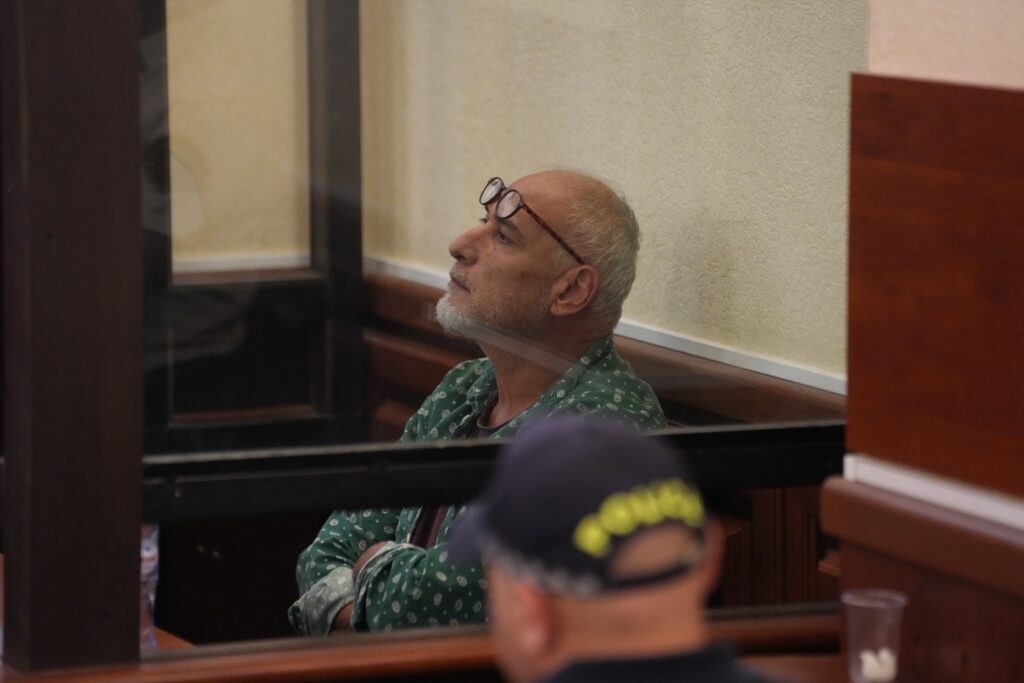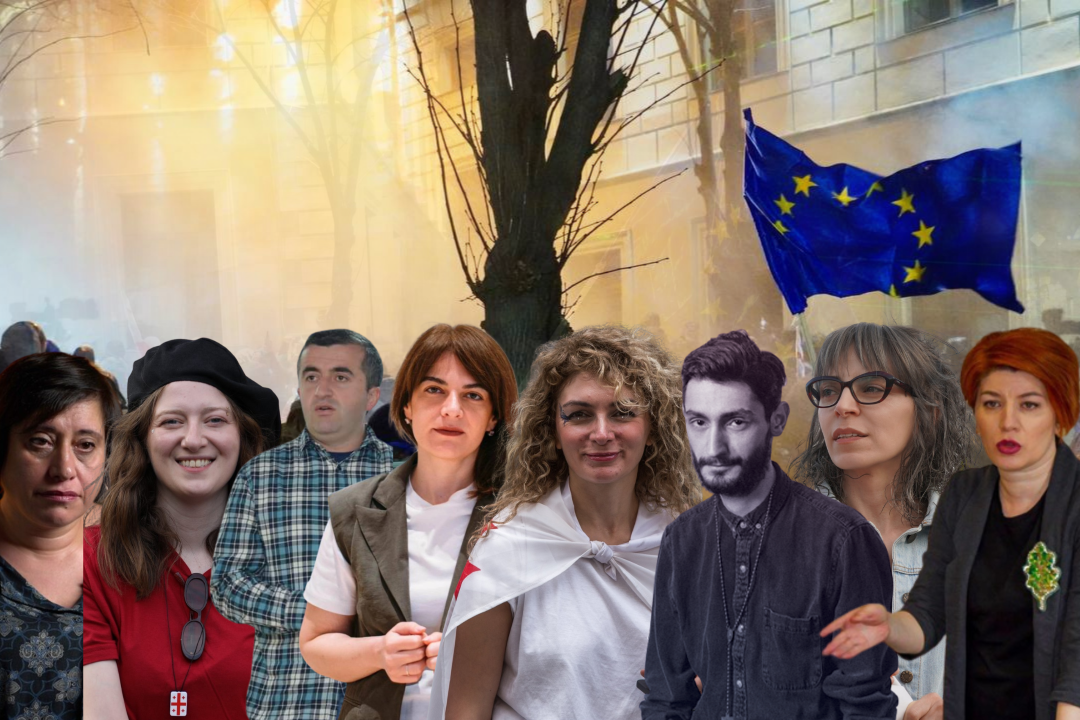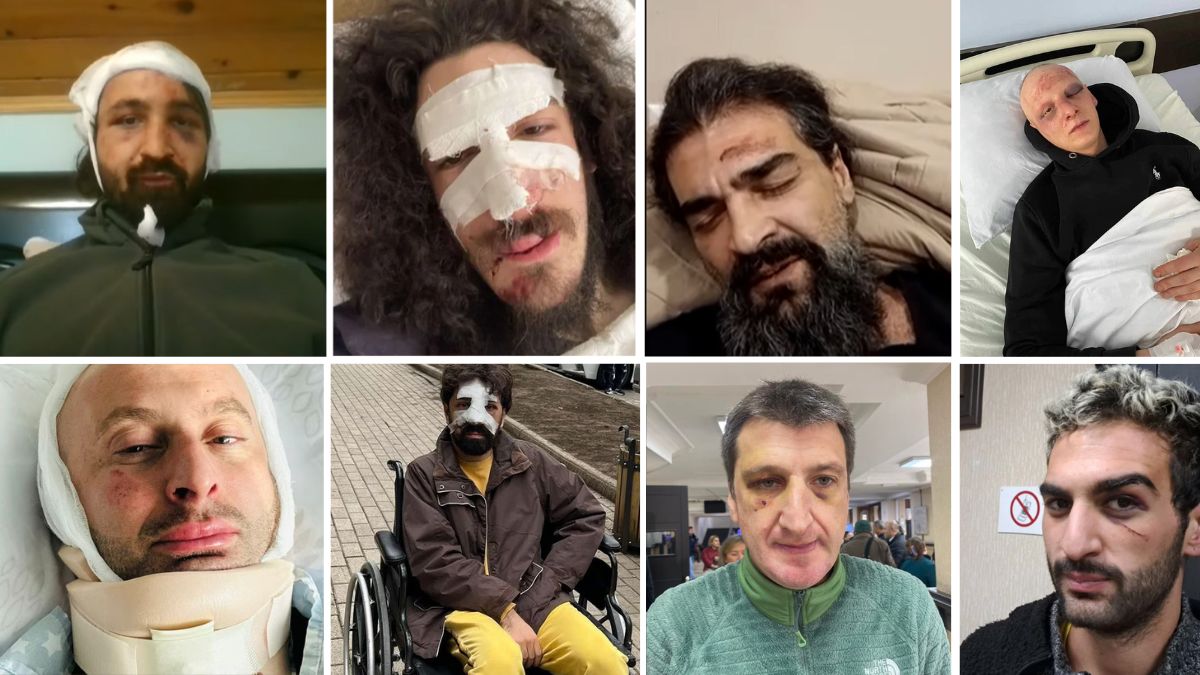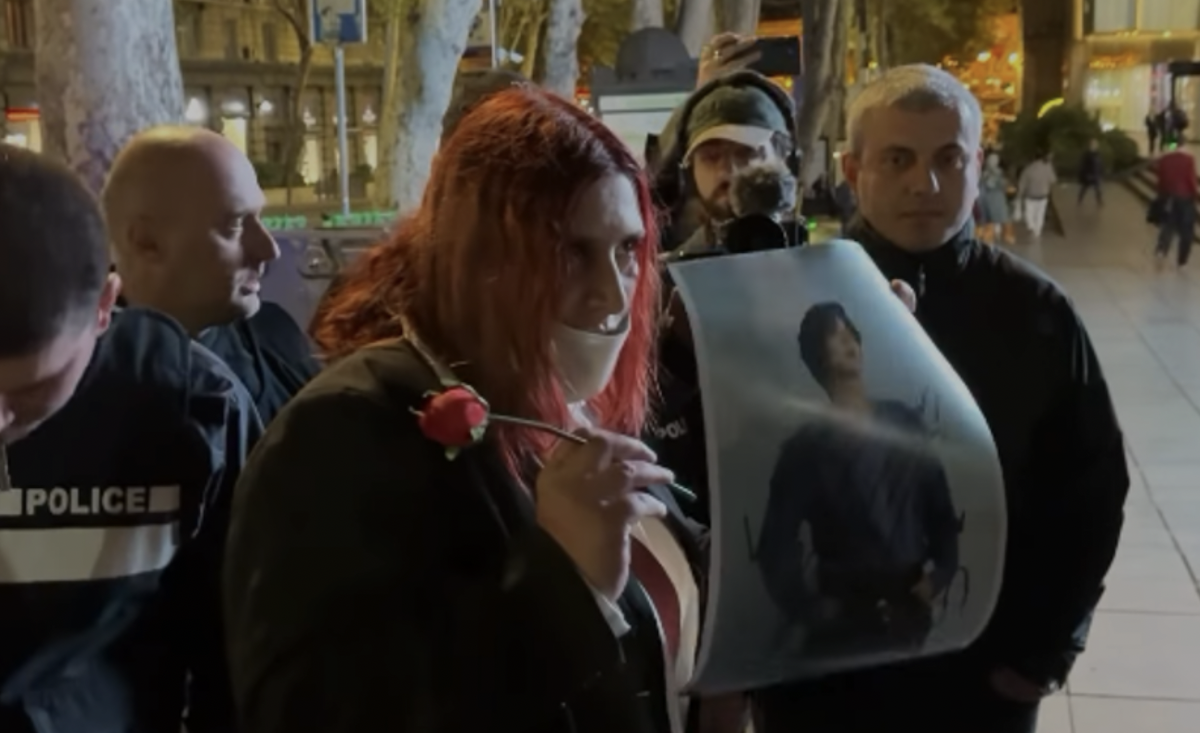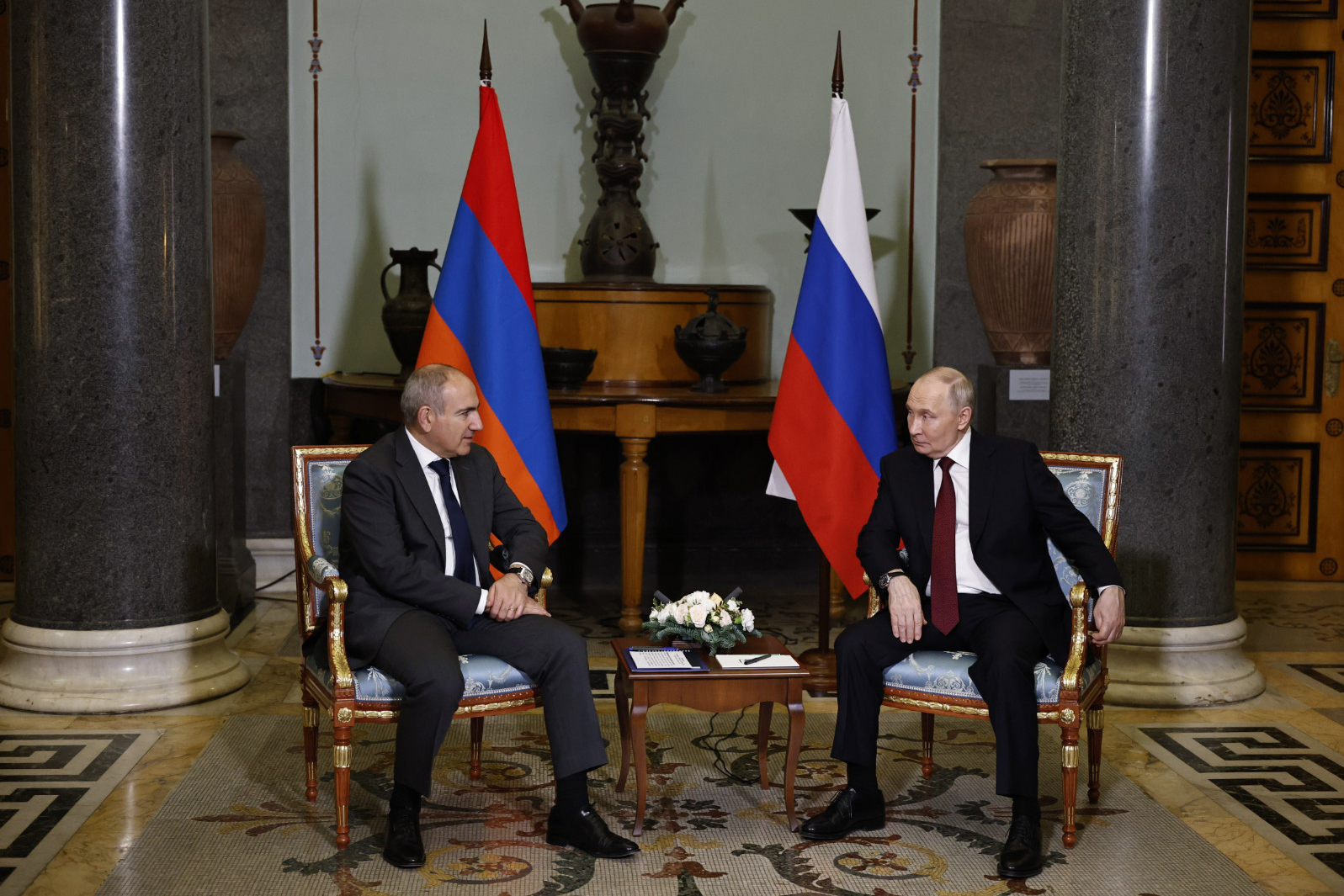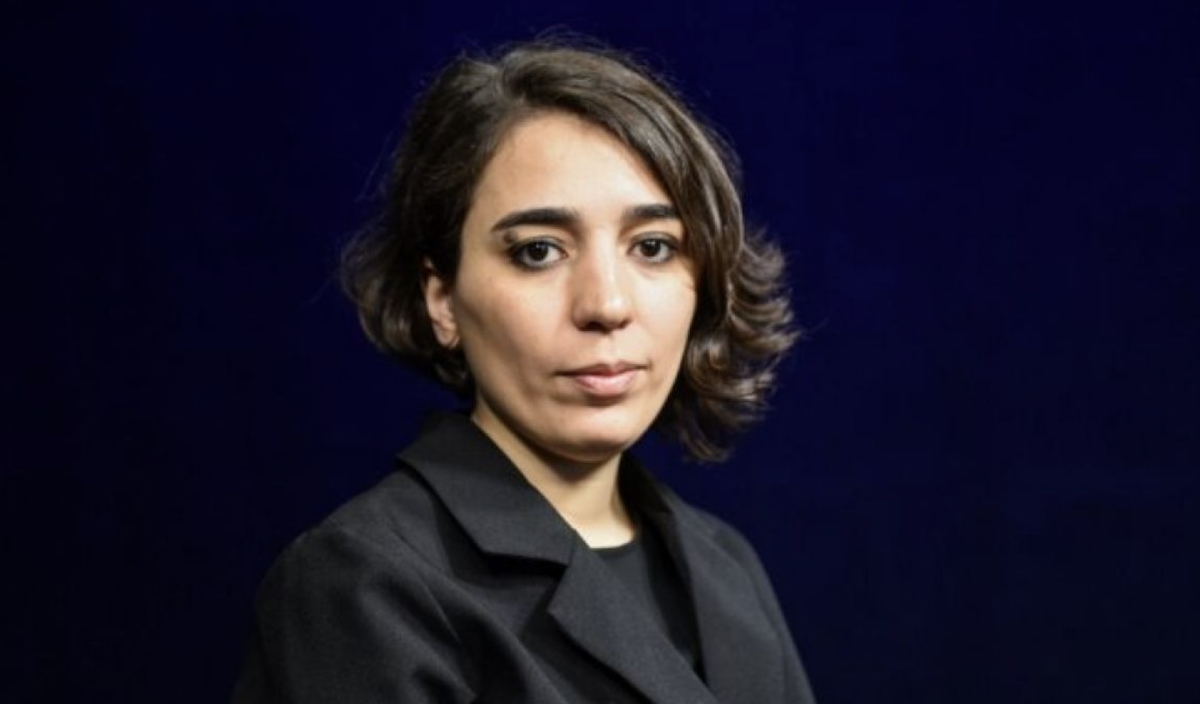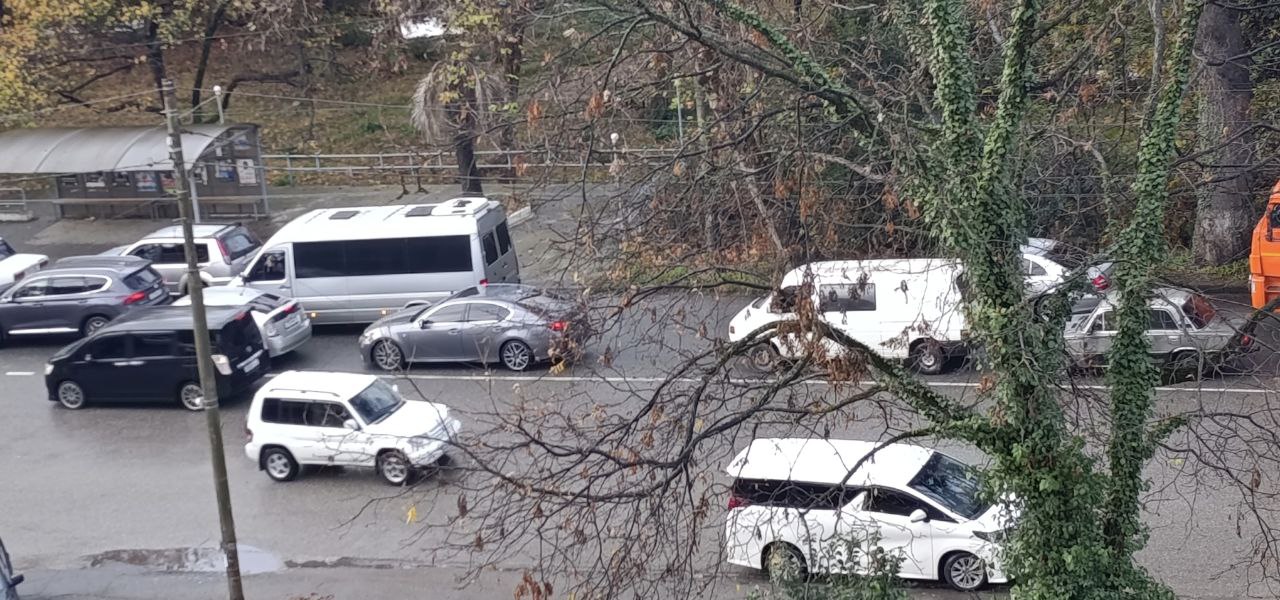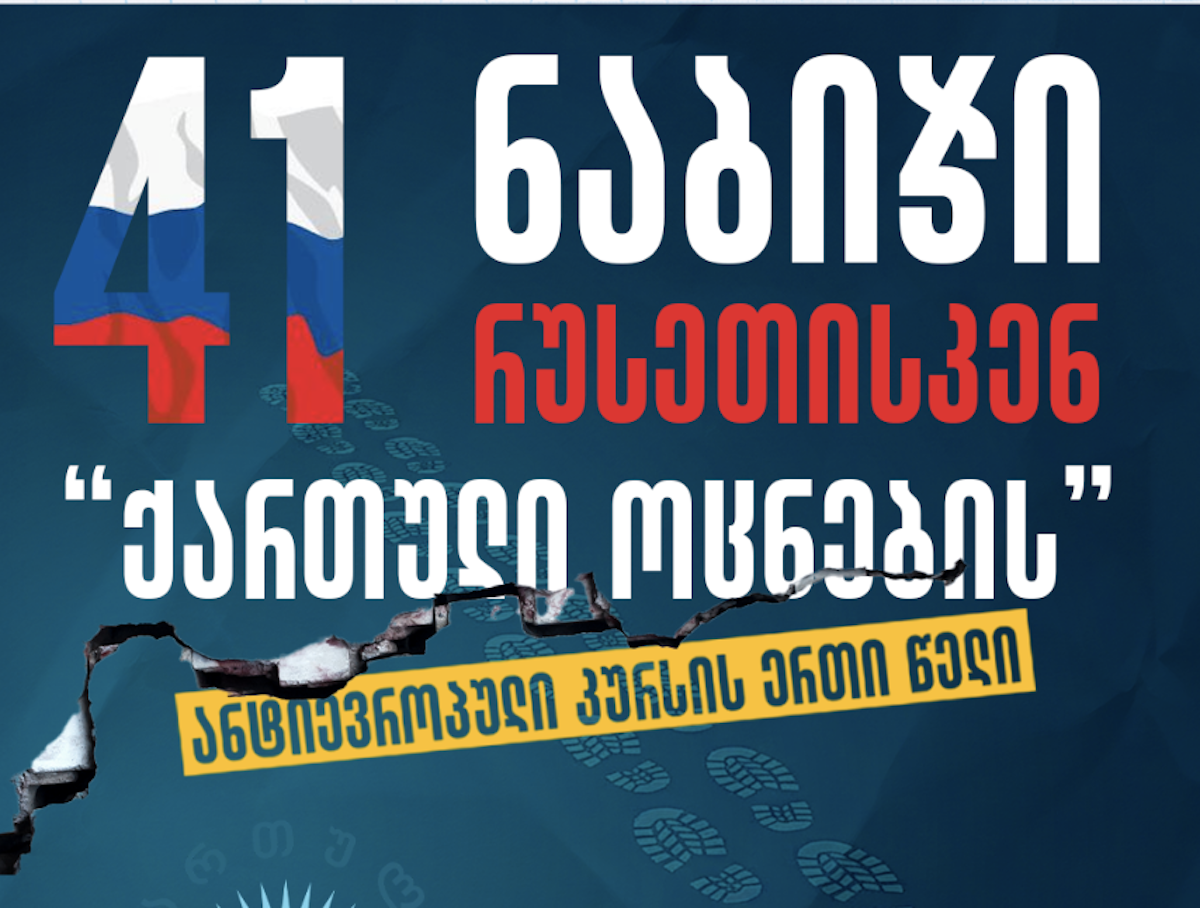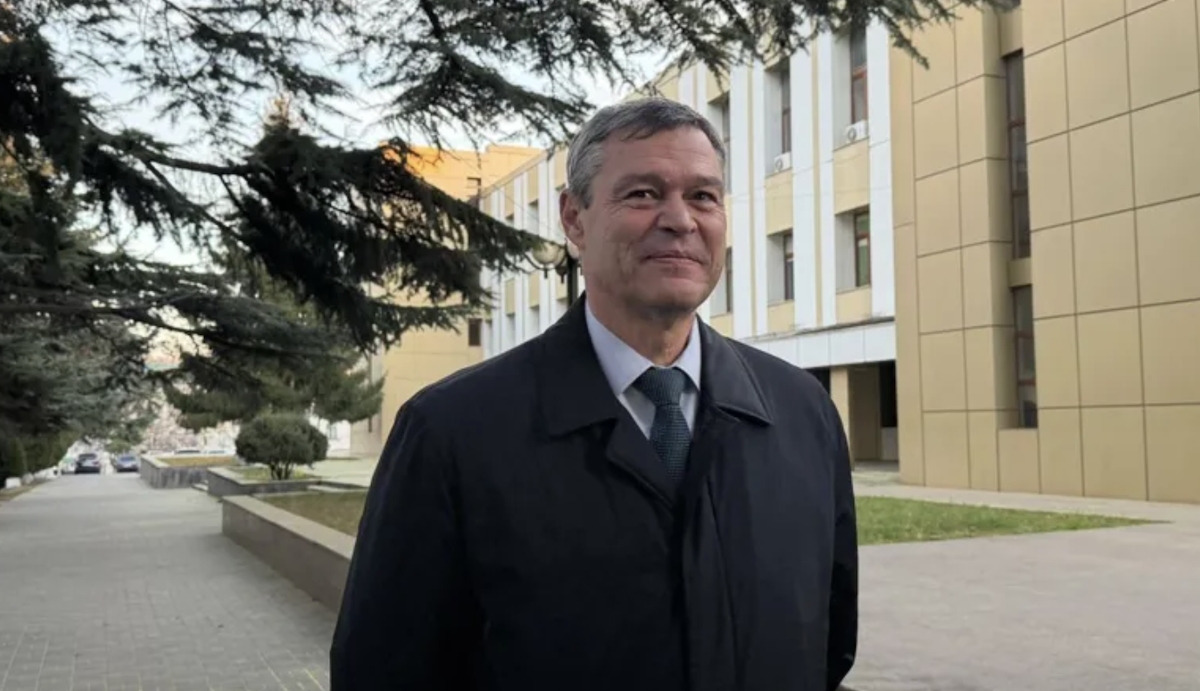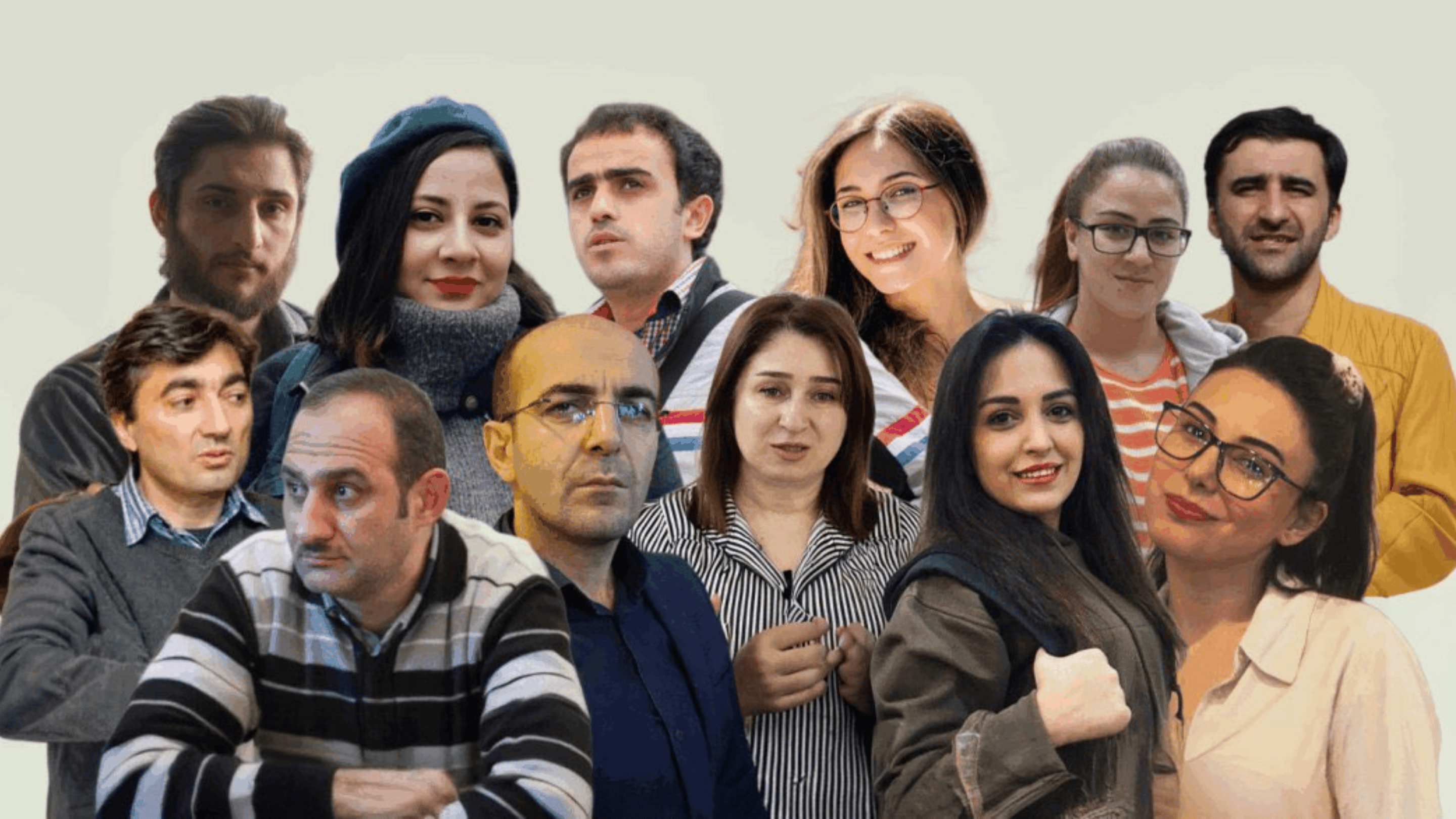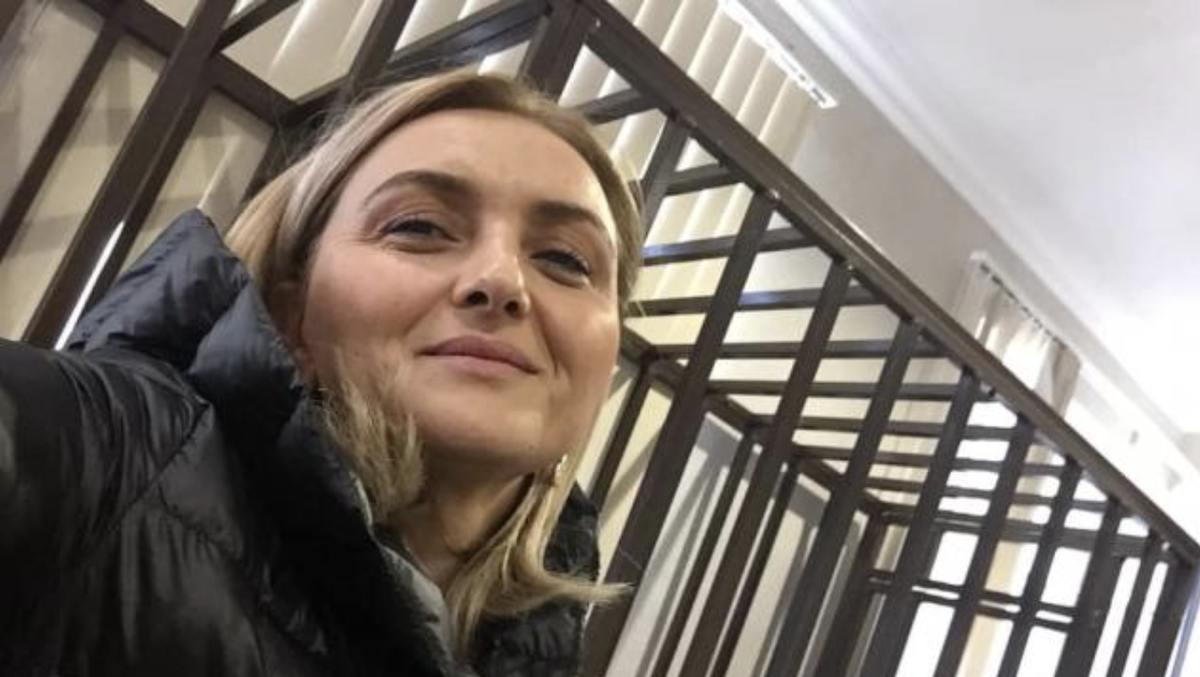'7pm on Rustaveli': how Georgian government tries to quell main protest hub
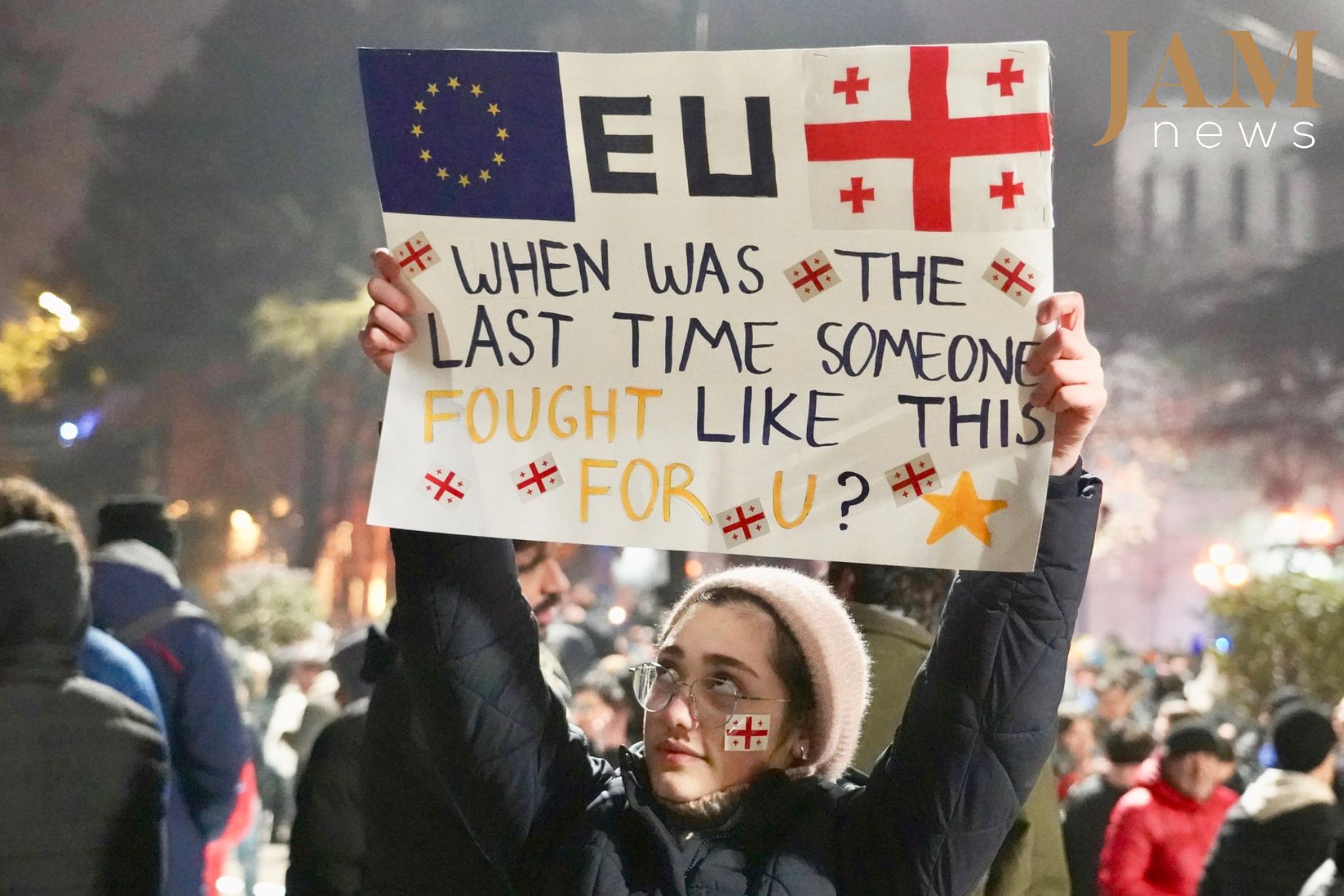
On the evening of 22 October, the 329th day of protests in Georgia, demonstrators failed for the first time to block the road. A fierce police response followed the attempt, and around 30 people were detained.
For 11 months, traffic has regularly built up every evening along Rustaveli Avenue, Tbilisi’s main thoroughfare, as protesters gather outside parliament to defend their country’s European future.
These ongoing demonstrations began on 28 November 2024, after Prime Minister Irakli Kobakhidze announced a pause in Georgia’s EU accession talks.
- New repressive amendments in Georgia – up to 15 days for wearing mask at protests
- Georgian Dream passes new law tightening measures against protesters
- Opinion: ‘Georgia’s new protest laws should be seen as ban on freedom of expression’
Although the government tries to portray the Rustaveli protests as “a gathering of 100–150 idle people,” the reality is far more significant. This is evident in the hastily passed repressive laws that the ruling Georgian Dream party has been adopting and brutally enforcing for almost a year in an effort to suppress the demonstrations outside parliament.
The situation has reached absurd extremes: people are being detained for wearing medical masks or simply standing on the pavement in front of the parliament building.
“Blocked again today”

In recent months, the protest on Rustaveli Avenue has become a key symbol of Georgian citizens’ resistance—a space demonstrating that authoritarianism has not yet prevailed in the country.
As a direct consequence of this movement, the Georgian Dream party has become increasingly isolated on the international stage, with the West no longer considering the regime a legitimate partner. Moreover, hundreds of Georgian Dream members are now under Western sanctions.
The Rustaveli protest has also succeeded in keeping Georgia in the global political spotlight. When Western leaders and international media mention Georgia, they primarily refer to the citizens fighting for their country’s European future on Rustaveli Avenue.
For the protesters, gathering on Rustaveli Avenue every evening at exactly seven o’clock has become a ritual. Many say it is their second job.
People who have stood in front of the parliament for over 300 days have grown like one family—everyone knows each other. They greet one another when arriving and check in on chats late at night to make sure everyone got home safely.
Participants in the “Rustaveli protest” do not leave their comrades alone, even in courts and prisons. They frequently attend hearings for activists arrested at the demonstrations. Those who cannot get inside stand outside, enduring sun or rain.
Before the Georgian Dream banned face coverings, the protests resembled a carnival: people wore all sorts of masks—medical, Venetian, carnival, Halloween masks—to avoid being identified on surveillance cameras.
The main symbols of the protests remain the flags of Georgia and the European Union. Every evening they are waved in front of the parliament, and some protesters even wrap themselves in the flags.
Parents of conscience prisoners arrested during these protests—mostly mothers—also stand on Rustaveli Avenue every day. Footage of them holding hands, encouraging one another, and shielding protesters from the police during tense moments evokes strong emotions.
“We had no other choice,” “We are not afraid of anything,” “We will fight to the end until we embrace our children”—these slogans are regularly cited by the media.
“Today [Rustaveli Avenue] is blocked too”—for over 300 evenings, this phrase has repeatedly appeared on social media and in news broadcasts.
“Is Rustaveli blocked or not?”—prisoners ask from their cells. The ongoing protest remains their only hope for release.
Protest that has withstood all trials
This protest has endured particularly brutal dispersals last autumn, with tear gas, water cannons, beatings, and arrests.
It also withstood the harsh winter, torrential spring rains, and the unbearable summer heat in Tbilisi.
The daily protests are occasionally supplemented by mass marches, organised by different groups for various occasions and dates. For example, 26 October marks the anniversary of the illegitimate parliamentary elections.
Sometimes protesters put on performances, such as a traditional Georgian war dance performed by hundreds of participants.
The rallies have also revived the march of the Shevardeni sports society, first held over 100 years ago on 26 May 1919, the day the First Georgian Republic was declared following the collapse of the Russian Empire. Later, Soviet authorities deemed the society anti-state and disbanded it. Now, at one of the protests, hundreds of girls dressed in black skirts, red t-shirts, and black berets marched in formation along Rustaveli Avenue.
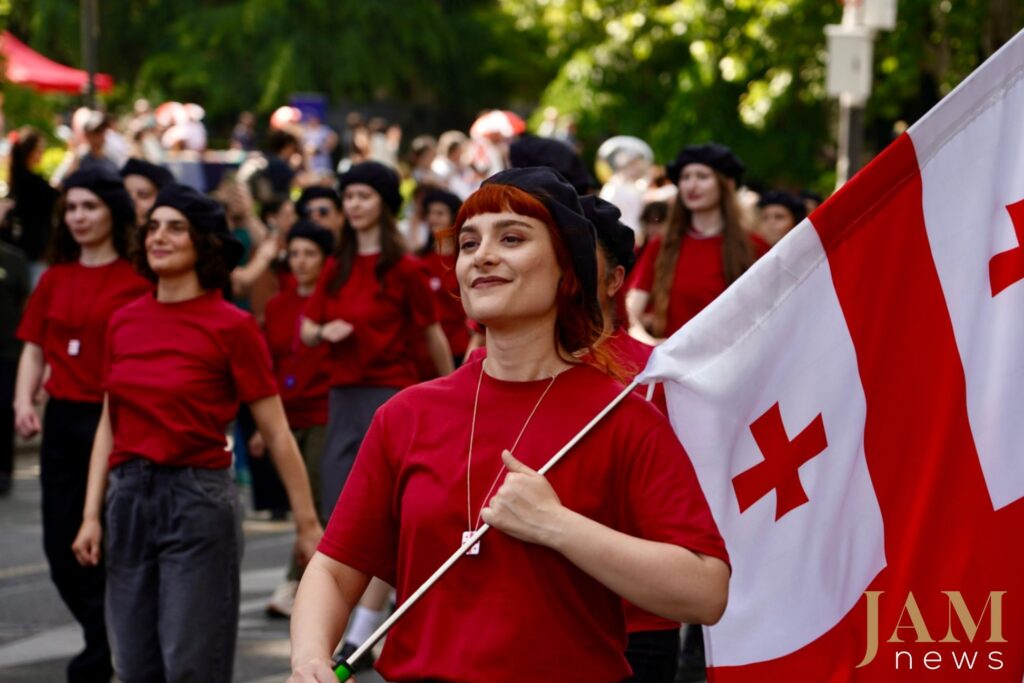
There have been other “performances” as well: protesters broke symbolic barriers, wore mock prison uniforms in solidarity with political prisoners, and more.
The number of prisoners of conscience in Georgia is no longer fully counted, but it has already surpassed 200. In terms of political prisoners per capita, Georgia now exceeds Russia and Belarus.
Around 70 people were arrested on criminal charges following the autumn 2024 protests. Most of them have already received multi-year prison sentences.
Another approximately 50 people were arrested on criminal charges after the “failed revolution” on 4 October 2025. On that day, some protesters tried to storm the presidential palace, and the police arrested nearly everyone they identified on surveillance footage.
In just the past four days (since 19 October, after a new repressive law came into force), around 80 people were arrested on administrative charges. They were detained for wearing masks or standing on the roadway in front of parliament. Lawyers cannot determine their whereabouts. Sometimes, during court hearings, lawyers learn for the first time that someone else has been arrested and is facing trial.
For the first time in the history of independent Georgia, well-known writers, poets, journalists, doctors, comedians, opera singers, artists, actors, and musicians have been imprisoned. Additionally, nine opposition party leaders are currently in detention.
How “Georgian Dream” fights protests on Rustaveli
“Not a drop of sympathy for these people,” the country’s illegitimate prime minister, Irakli Kobakhidze, said bluntly of the demonstrators. He called them “shameful,” “fools” and “idlers.”
“I owe it to all sane citizens to finally neutralise these disgraceful elements in our country, and we will apply all lawful measures in the strictest way. One hundred or 150 foreign agents cannot use violence against millions of our fellow citizens. That is completely unacceptable, so the state and the law will be very tough on them,” Kobakhidze said on 5 October.
Soon after his remarks, the Georgian Dream party proposed — and within days the parliament passed — a new restrictive law that further tightens penalties for participating in protests. Kobakhidze said existing measures, such as fines, had failed to work and that tougher steps were therefore necessary.
To curb demonstrations and suppress the “Rustaveli protest,” the Georgian Dream party began tightening legislation as early as November last year. Over the past ten months, four waves of such measures have been introduced:
The amendments passed on 13 December 2024 banned the use of lasers, masks, and fireworks at rallies. High fines were imposed for violations. The same amendments significantly increased fines for graffiti on buildings and blocking roads. Hundreds of protesters received such fines, with some fined multiple times.
Amendments adopted on 6 February 2025 prohibited holding rallies in private buildings without the owner’s prior consent. The maximum period of administrative detention was increased from 15 to 60 days. Verbal insults against politicians or state officials were classified as administrative offences — under this provision, six journalists were fined solely for calling a Georgian Dream MP a “slave” on social media.
On 2 July, the legislation was further tightened. The new amendments imposed administrative detention for failing to pay fines for minor hooliganism, disobeying police officers, insulting officials, or blocking roads, as well as for repeat offences. These changes followed the realisation that fines alone were ineffective, and people continued gathering on Rustaveli Avenue.
The fourth wave came on 16 October. Under these amendments, violations of Georgian Dream’s rally rules became criminal offences punishable by imprisonment. For instance, a judge may immediately send a demonstrator to two months (60 days) in jail if they are found with flammable materials, fireworks, or firearms. Wearing a mask, carrying tear gas, or blocking a road can result in up to 15 days of detention. Repeat violations carry a one-year prison sentence, with each subsequent offence punishable by up to two years’ imprisonment.
These amendments came into force on 18 October, and the following morning, 19 October, authorities began arresting people who had worn masks or blocked roads the previous evening. Among those detained were opposition TV channel Formula journalists Vakho Sanaya and Keta Tsitskishvili, artist Levan Margiani, publisher Shalva Chubinidze, and several activists. They faced between five and 15 days in jail.
Yet on the 330th day of protests, after four days of mass arrests, Rustaveli Avenue was blocked once again.
That day, even more people joined the protest than in previous days. Initially, a few participants stepped onto the road carrying flags, and soon the rest of the demonstrators followed. Police first tried to disperse the crowd and called in vehicles for arrests, but they eventually withdrew from the area.
Protests on Rustaveli avenue










